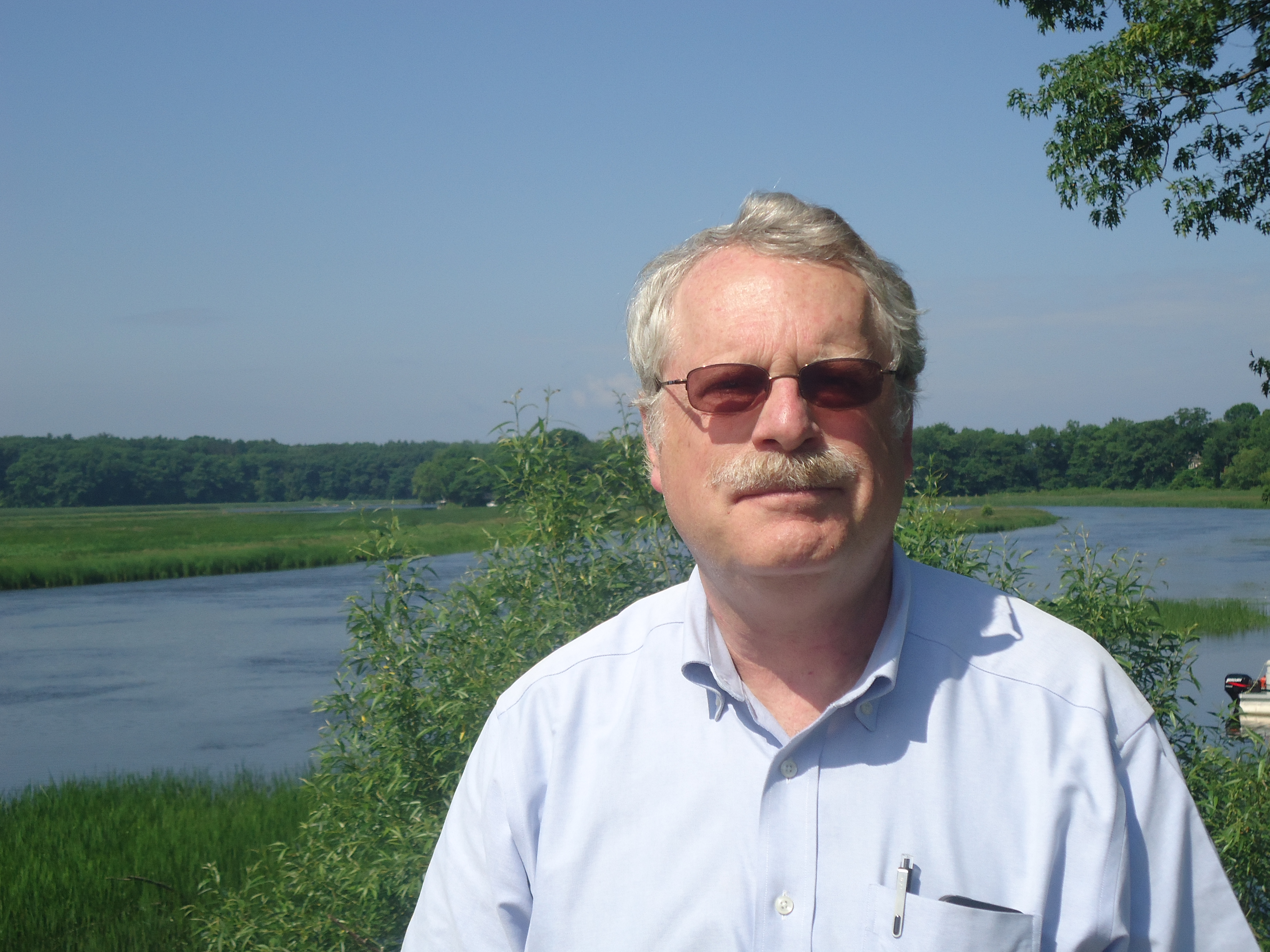.jpg?1765101961)
The 2nd International Electronic Conference on Water Sciences
Part of the International Electronic Conference on Water Sciences series
16–30 November 2017
Water, Water Sciences, water resources
- Go to the Sessions
- Event Details
Welcome from the Chairs
We are pleased to welcome you to the 2nd International Electronic Conference on Water Sciences (ECWS2), promoted by the open access journal Water https://www.mdpi.com/journal/water.
After the 1st International Electronic Conference on Water Sciences (ECWS1) successfully addressed this vitally important subject, https://sciforum.net/conference/ecws-1, we recognized the need for hosting a second conference, aiming at deepen the discussion and expand the list of topics to be covered.
Climate change, urbanization, consumption and demand for food and energy, and changing land use, are examples of phenomena and trends that place water at the center of the challenge for sustainable development.
Emerging issues ask for innovative solutions, therefore appealing to the efforts of researchers. Water management, being a complex multi-disciplinary topic, requires the scientific knowledge and the technical competences capable of solving a multiplicity of problems. Both basic and applied studies are being conducted all over the world addressing topics of local, regional and global relevance.
Inter- and cross-disciplinary in breadth, the conference focus on stimulating intellectual exchange regarding all aspects of water, while disseminating cutting-edge information concerning protection of this natural resource.
There will be the following Topical Sections:
Call for Papers
The 2nd International Electronic Conference on Water Sciences (ECWS-2) will be held from 16 to 30 November 2017 online . This event enables the researchers of research field to present their research and exchange ideas with their colleagues without the need to travel. All proceedings will be published on the conference homepage in open access format.
Through this event, we aim to cover the following topics:
- Environmental Geochemistry
- Water Quality and Analytical tools
- Rainwater Harvesting in Buildings
- Pathogens in Water
- Emerging Contaminants in the Water Cycle
- Climate Change and Marine Ecosystems
- Wetland Research
The conference will be completely free of charge—both to attend and for scholars to upload and present their latest work on the conference platform. There will also be the possibility to submit selected papers to the Special Issue "Selected Papers from the 2nd International Electronic Conference on Water Science" of journal Water (ISSN 2073-4441; Impact Factor: 1.832 (2016) with a 20% discount on the APCs; ECWS-2 offers you the opportunity to participate in this international, scholarly conference without having the concern or expenditure of travel — all you need is your computer and access to the Internet. We would like to invite you to “attend” this conference and present your latest work.
Abstracts (in English) should be submitted by 10 October 2017 online at https://www.sciforum.net/login. For accepted abstracts, the full paper can be submitted by 10 November 2017. The conference itself will be held 16-30 November 2017.
We hope you will be able to join this exciting event and support us in making it a success. ECWS-2 is organized and sponsored by MDPI, a scholarly open access publisher based in Basel, Switzerland.
Paper Submission Guidelines
For information about the submission procedure and preparation of a full presentation, please refer to the "Instructions for Authors".
Conference Chairs
mfcamoes@fc.ul.pt
strychak@gvsu.edu
Instructions for Authors
Submissions should be done by the authors online by registering with www.sciforum.net, and using the "Submit New Abstract" function once logged into system.
- Scholars interested in participating with the conference can submit their abstract (about 200-300 words covering the areas of manuscripts for the proceedings issue) online on this website until 15 August 10 October 2017.
- The Conference Committee will pre-evaluate, based on the submitted abstract, whether a contribution from the authors of the abstract will be welcome for the 2nd International Electronic Conference on Water Science. All authors will be notified by 31 August 15 October 2017 about the acceptance of their abstract.
- If the abstract is accepted for this conference, the author is asked to submit his/her manuscript, optionally along with a PowerPoint and/or video presentation of his/her paper (only PDF), until the submission deadline of 30 September 10 November 2017.
- The manuscripts and presentations will be available on https://sciforum.net/conference/ecws-2 for discussion and rating during the time of the conference 16-30 November 2017.
- Accepted papers will be published in the journal Proceedings. After the conference, the Conference Committee will select papers that may be included for publication in the Special Issue "Selected Papers from the 2nd International Electronic Conference on Water Science" by the Open Access Journals Water with a 20% discount off the Article Processing Charge(APC).
Manuscripts for the proceedings issue must have the following organization:
- Title
- Full author names
- Affiliations (including full postal address) and authors' e-mail addresses
- Abstract
- Keywords
- Introduction
- Methods
- Results and Discussion
- Conclusions
- (Acknowledgements)
- References
Manuscripts should be prepared in MS Word or any other word processor and should be converted to the PDF format before submission. The publication format will be PDF. The manuscript should count at least 3 pages (incl. figures, tables and references). There is no page limit on the length, although authors are asked to keep their papers as concise as possible.
Authors are encouraged to prepare a presentation in PowerPoint or similar software, to be displayed online along with the Manuscript. Slides, if available, will be displayed directly in the website using Sciforum.net's proprietary slides viewer. Slides can be prepared in exactly the same way as for any traditional conference where research results can be presented. Slides should be converted to the PDF format before submission so that our process can easily and automatically convert them for online displaying.
Besides their active participation within the forum, authors are also encouraged to submit video presentations. If you are interested in submitting, please contact the conference organizer at ecws@mdpi.com to get to know more about the procedure. This is an unique way of presenting your paper and discuss it with peers from all over the world. Make a difference and join us for this project!
Submission: Manuscripts should be submitted online at www.sciforum.net/login by registering and logging in to this website.
Accepted File Formats
- MS Word: Manuscript prepared in MS Word must be converted into a single file before submission. When preparing manuscripts in MS Word, the Electronic Conference on Materials Science Microsoft Word template file (see download below) must be used. Please do not insert any graphics (schemes, figures, etc.) into a movable frame which can superimpose the text and make the layout very difficult.
- Electronic Conference on Water Science MS Word Template File
- References: References must be numbered in order of appearance in the text (including tables and legends) and listed individually at the end of the manuscript. We recommend preparing the references with a bibliography software package, such as EndNote, ReferenceManager or Zotero to avoid typing mistakes and duplicated references. Citations and References in Supplementary files are permitted provided that they also appear in the main text and in the reference list. In the text, reference numbers should be placed in square brackets [ ], and placed before the punctuation; for example [1], [1–3] or [1,3]. For embedded citations in the text with pagination, use both parentheses and brackets to indicate the reference number and page numbers; for example [5] (p. 10). or [6] (pp. 101–105). The Reference list should include the full title as recommended by the ACS style guide. The style file for endnote, MDPI.ens, can be found at https://endnote.com/downloads/style/mdpi
- Author List and Affiliations: Authors' full first and last names must be provided. The initials of any middle names can be added. The PubMed/MEDLINE standard format is used for affiliations: complete address information including city, zip code, state/province, country, and all email addresses. At least one author should be designated as corresponding author, and his or her email address and other details should be included at the end of the affiliation section. Please read the criteria to qualify for authorship.
- Figures, Schemes and Tables: All figure files should be separately uploaded during submission. Figures and schemes must be provided at a sufficiently high resolution (minimum 1000 pixels width/height, or a resolution of 300 dpi or higher). All Figure file formats are accepted. However, TIFF, JPEG, EPS and PDF files are preferred. Materials can publish multimedia files in articles or as supplementary materials. Please get in touch with the Editorial office for further information. All Figures, Schemes and Tables should also be inserted into the main text close to their first citation and must be numbered following their number of appearance (Figure 1, Scheme I, Figure 2, Scheme II, Table 1, etc.). All Figures, Schemes and Tables should have a short explanatory title and a caption. All table columns should have an explanatory heading. To facilitate the copy-editing of larger tables, smaller fonts may be used, but in no less than 8 pt. in size. Authors should use the Table option of Microsoft Word to create tables. For multi-panel figures, the file must contain all data in one file. For tips on creating multi-panel figures, please read the helpful advice provided by L2 Molecule. Authors are encouraged to prepare figures and schemes in color (RGB at 8-bit per channel). Full color graphics will be published free of charge.
For further enquiries please contact us at ecws@mdpi.com.
Authors wishing to publish their papers are asked to abide to the following rules:
- Any facts that might be perceived as a possible conflict of interest of the author(s) must be disclosed in the paper prior to submission.
- Authors should accurately present their research findings and include an objective discussion of the significance of their findings.
- Data and methods used in the research need to be presented in sufficient detail in the paper, so that other researchers can replicate the work.
- Raw data should preferably be publicly deposited by the authors before submission of their manuscript. Authors need to at least have the raw data readily available for presentation to the referees and the editors of the journal, if requested. Authors need to ensure appropriate measures are taken so that raw data is retained in full for a reasonable time after publication.
- Simultaneous submission of manuscripts to more than one journal is not tolerated.
- Republishing content that is not novel is not tolerated (for example, an English translation of a paper that is already published in another language will not be accepted).
- If errors and inaccuracies are found by the authors after publication of their paper, they need to be promptly communicated to the editors of this journal so that appropriate actions can be taken. Please refer to our policy regarding publication of publishing addenda and corrections.
- Your manuscript should not contain any information that has already been published. If you include already published figures or images, please obtain the necessary permission from the copyright holder to publish under the CC-BY license.
- Plagiarism, data fabrication and image manipulation are not tolerated.
MDPI AG, the publisher of the Sciforum.net platform, is an open access publisher. We believe that authors should retain the copyright to their scholarly works. Hence, by submitting a Communication paper to this conference, you retain the copyright of your paper, but you grant MDPI AG the non-exclusive right to publish this paper online on the Sciforum.net platform. This means you can easily submit your paper to any scientific journal at a later stage and transfer the copyright to its publisher (if required by that publisher).
List of accepted submissions (23)
| Id | Title | Authors | Poster PDF | ||||||||||||||||||||||||||||||||||||||
|---|---|---|---|---|---|---|---|---|---|---|---|---|---|---|---|---|---|---|---|---|---|---|---|---|---|---|---|---|---|---|---|---|---|---|---|---|---|---|---|---|---|
| sciforum-013689 | Study on the Countermeasures of Ensuring Drinking Water Security in Shanshan County of Xinjiang Autonomous Region, China | , , , , , , , | N/A |
Show Abstract |
|||||||||||||||||||||||||||||||||||||
|
China has paid more attention to increasing urban and rural drinking water security in recent years. Ensuring the security of drinking water in urban and rural areas is the fundamental condition for protecting the basic interests of the public and is also an important aspect of building a moderately, all-sided prosperous society in China. Taking the Shanshan County in Turpan City of Xinjiang Autonomous Region for an example, this study analyzed the countermeasures of ensuring drinking water security. Firstly, this paper discusses the current quo of drinking water security in Shanshan. In terms of urban drinking water, problems include that: 1) drinking water sources are polluted to varying degrees; 2) water treatment technologies lag behind compared to the social development; 3) high leakage rate of water supply pipe network, and 4) low emergency handling capability. In terms of the rural drinking water, problems exist that small-scale drinking water security projects are on low construction standard, resulting in low water supply guarantee rate, and poor water source protection and water quality supervision. Secondly, based on the analysis of current problems, the quantity of the water resources guaranteed is put forward. This paper divides Shanshan County into three units as Karuqi area, Ertanggou area and Kekeya area based on urban or rural land use. This paper proposed the optimal distribution of regional water plants and water supply network for the optimal allocation of regional water resources. Thirdly, for water quality improvement, a corresponding water purification program is developed for raw water quality problems, including centralized and decentralized water quality treatment, as well as an intelligent water flow control process. At the same time, some management measures such as water source conservation and risk control measures are proposed in order to promote the security of drinking water. This paper also puts forward relevant strategic suggestions for ensuring the security of drinking water in Shanshan County, including enhancing the equipment for the project, modulizing the system of devices, instrumentation of the management system and developing intellegent water management platform. This study has certain reference value for solving the problems of drinking water security in urban and rural areas in the arid regions in northwest China and similar areas around the world. |
|||||||||||||||||||||||||||||||||||||||||
| sciforum-013896 | Freeze desalination as point of use water treatment technology: A case of chromium (VI) removal from water | , , , |
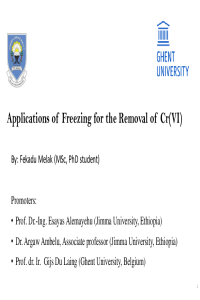
|
Show Abstract |
|||||||||||||||||||||||||||||||||||||
|
Options to develop tanning industries could be hindered even in the presence of huge leather industry raw materials due to the requirements of high-tech contaminant removal technologies, especially in developing countries. This study was initiated to investigate the efficiency of freeze desalination for Cr(VI) removal using refrigerators to generate fresh water. Synthetic solutions that represent major ion compositions of drinking water as well as deionized water to which known concentrations of Cr(VI) spiked into it, were added and frozen in a closed freezer unit. The effects of different parameters such as initial concentration, freeze duration, ice nucleation, fraction of ice volume, and influence of co-occurring ions were evaluated in relation to the quality of produced ice. The physicochemical characteristics of the produced meltwater were also evaluated. A high total water recovery of up to 85% was achieved in the experimental evaluation. Cr(VI) removal efficiency of up to 80% from simulated tap and 93 to 97% for deionized water spiked with Cr(VI) were found in this batch partial freezing. Freeze desalination was found to be relatively viable desalination technology in terms of quality of water produced, options on the use of cost effective refrigerants and technologies which could have a pertinent importance to save energy consumption of freezers. |
|||||||||||||||||||||||||||||||||||||||||
| sciforum-013914 | Filtering capability of porous pavements | , , , | N/A |
Show Abstract |
|||||||||||||||||||||||||||||||||||||
|
The objective of this study is to assess the filtering capability of porous pavement models and the quality of rainwater and stormwater filtered by such models. Three slabs of porous asphalt mixtures and two systems composed of porous layers that resulted in porous pavement structures were produced. Data were collected in two phases: using rainwater directly from the sky and then using stormwater collected from a street. The models with different layers were assembled in acrylic boxes and rainwater was stored into the boxes in each rainfall event. Parameters such as pH, dissolved oxygen, ammonia, phosphorus, nitrite, aluminium, chromium, copper, zinc and iron were measured. The infiltration capacity of the models varied from 83.4% to 83.7%. For both rainwater and stormwater quality analyses, there was an increase in the concentration of the following parameters: phosphorus, iron, aluminium, zinc, nitrite, chromium, cooper and pH; there was no significant variation in the concentration of dissolved oxygen; and there was a decrease in ammonia in one of the models. However, the concentrations of only phosphorus and aluminium exceeded the limits established by the Brazilian National Environmental Council and National Water Agency for the use of non-potable water. The models were capable of filtering rainwater and stormwater, and reducing the concentration of ammonia. It can be concluded that it is possible to collect stormwater from asphalt porous surfaces and porous pavements. Porous pavements are able to filter out certain pollutants from stormwater and rainwater, and showed to be an alternative to harvest rainwater for non-potable uses and to recharge the water table. |
|||||||||||||||||||||||||||||||||||||||||
| sciforum-013970 | Application of nanosilver in swimming pool water treatment technology | , |

|
Show Abstract |
|||||||||||||||||||||||||||||||||||||
|
The paper presents the possibility of applying a colloidal solution of nanosilver in a closed circuit of swimming pool water treatment. The applied nanosilver solution is characterized as having a very high biocidal effect, with no negative impact on the human and animal body, or the environment. Because the tested swimming pool is primarily designed for the rehabilitation of disabled people, the water quality must be strictly kept and controlled. Water quality was analyzed in the following system: prefiltration (mesh filter) - dosing of silver nanoparticle concentrate in the form of an aqueous solution - actual filtration (vacuum filter with multilayer bed) - UV irradiation (low pressure UV lamp) - final disinfection with NaOCl solution. Samples of pool water for the control of water quality variation in the treatment cycle were taken from 5 points (from pool basin, retention tank, just before filter, just after filter and from water supply system replenishing water lost from swimming pool circuit). The safety of water for bathing and rehabilitation was appraised by comparing the bacteriological and physicochemical tests results with admissible values specified in hygienic requirements for swimming pools (WHO, 2006: Guidelines for safe recreational water environments. Vol. 2: Swimming pools and similar environments, 2006; DIN 19643, 2012: Water treatment for swimming and bathing pools, in German; Polish Ordinance of the Ministry of Health, 2015: Requirements for water at swimming pools, Journal of Laws Item 2016; the Ministry of Health). The analysis of the microbiological tests results of the pool water shows that nanosilver solution can be successfully applied for precoating the filter bed and supporting the disinfection system. Despite finding a large number of mesophilic bacteria in the samples of the filtrate, only 1 CFU/1ml (limit of 100 CFU/1ml) was determined in the samples of the swimming pool water. Due to the use of the pool, a special attention was paid to the bacteriological purity and the stability of the disinfectant concentration - free chlorine and chloramine concentration as a by-product of pool water disinfection. |
|||||||||||||||||||||||||||||||||||||||||
| sciforum-014050 | A Pattern-Based Approach to Evaluating Water Quality | N/A |
Show Abstract |
||||||||||||||||||||||||||||||||||||||
|
As water quality evaluations continue to expand in number of analytes and frequency of measurements, a challenge arises as how to present these data in a manner that can best be used to guide remedial actions and inform water resource decisions. Graphic artists have developed visualization techniques using colors, textures and layers that enhance people’s accessibility to and understanding of data. However, beyond just visual data enhancement, the use of hierarchically arranged spatial patterns or sequentially arranged temporal patterns can provide a means of discerning trends, anomalies and correlations among water quality parameters that would otherwise be difficult to distinguish. A related approach includes comparing actual water quality patterns with either ideal patterns (generated by models) or abstract patterns (created from theories) as a check on their practicality and relevance to the observed datasets. Finally, assessing the connectivity of water quality patterns as a coherent network, rather than as isolated data points, can expose potential feedback loops, counterintuitive or disproportionate effects, and data limitations. Pattern connectivity is also consistent with a systems interpretation of water quality, which may reveal subtle interactions among the water quality components or parameters. Perhaps the greatest advantage of pattern-based approaches is their usefulness to non-scientists (e.g., managers, stakeholders), who often misinterpret or are confused by the language, symbols, mathematics, and graphics appearing in technical reports and journal articles. |
|||||||||||||||||||||||||||||||||||||||||
List of Authors (69)
Conference Schedule
Deadline for Abstract Submission: 10 October 2017
Notification of Acceptance: 15 October 2017
Deadline for Submission of Full Paper: 10 November 2017
Conference Open: 16-30 November 2017
Conference Organizers
Prof. Dr. Maria Filomena G. F. C. Camões
Chair of the 2nd International Electronic Conference on Water Sciences
Department of Chemistry and Biochemistry Faculdade de Ciências de Lisboa Universidade de Lisboa C8, Campo Grande, 1749-016 Lisbon, Portugal
E-mail: mfcamoes@fc.ul.pt
Prof. Dr. Kevin B. Strychar
Co-Chair of the 2nd International Electronic Conference on Water Sciences
Associate Professor, Climate Change Studies of Aquatic & Marine Ecosystems, Annis Water Resources Institute, Grand Valley State University,131 Lake Michigan Center,740 W. Shorelind Dr., Muskegon, MI 49441-1678, USA
E-mail: strychak@gvsu.edu
Conference CommitteeProf. Dr. Maurizio Barbieri
Department of Earth Sciences, Sapienza University of Rome, P.le Aldo Moro, 5 - 00185 Roma, Italy
E-mail: maurizio.barbieri@uniroma1.it
Prof. Dr. Maria Filomena Camões
Department of Chemistry and Biochemistry Faculdade de Ciências de Lisboa Universidade de Lisboa C8, Campo Grande, 1749-016 Lisbon, Portugal
Prof. Dr. Enedir Ghisi
Laboratory of Energy Efficiency in Buildings, Department of Civil Engineering, Federal University of Santa Catarina, Campus Universitario, Trindade, Florianópolis - SC, 88040-900, Brazil
E-mail: enedir@labeee.ufsc.br
Prof. Dr. Sunny Jiang
Department of Civil and Environmental Engineering, University of California, Irvine, California 92697-2175, USA
E-mail: sjiang@uci.edu
Prof. Dr. Wilhelm Püttmann
J.W. Goethe University, Institute of Atmospheric and Environmental Sciences, Department of Environmental Analytical Chemistry, Altenhöferallee 1, 60438 Frankfurt am Main, Germany
E-mail: puettmann@iau.uni-frankfurt.de
Prof. Dr. Kevin Strychar
Climate Change Studies of Aquatic & Marine Ecosystems, Annis Water Resources Institute,Grand Valley State University,131 Lake Michigan Center,740 W. Shorelind Dr., Muskegon, MI 49441-1678, USA
Prof. Dr. Richard Smardon
Department of Environmental Studies, SUNY College of Environmental Science and Forestry, State University of New York, 211B Marshall Hall, 1 Forestry Drive, Syracuse, NYU 13210, USA
E-mail: rsmardon@esf.edu
Conference SecretaryMs. Nina Yang
MDPI AG, Basel, Switzerland
E-Mail: ecws@mdpi.com
A. Environmental Geochemistry
Section Chair
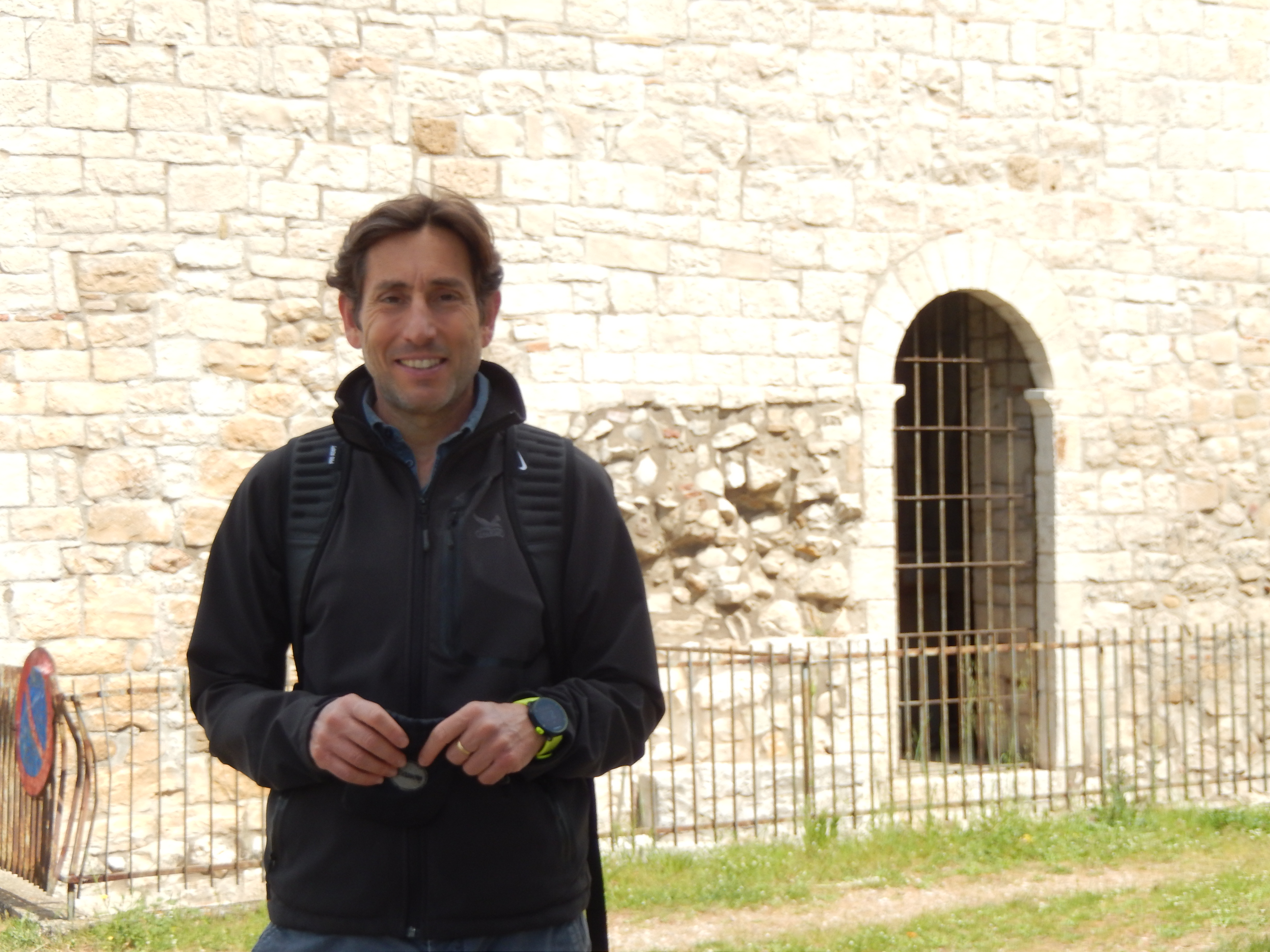
Prof. Maurizio Barbieri (Department of Earth Sciences, Sapienza University of Rome, ITALY)
Significant quantities of some pollutants have been introduced in the environment by human activities (e.g. energy production, communications, agriculture, textiles, medicine, cosmetics, and personal care products). An understanding of these processes is an essential tool in many environmental investigations. This session will provide a forum for presenting research related to aqueous geochemical principles, as well as examples of real-world applications. Topics will include: fundamentals of dissolved ions and their interactions; common techniques of water sample collection and analysis; environmental tracers; groundwater treatment and remediation; regulatory aspects; geochemical modelling and applications of isotopic and geochemical tracers to the industrial emissions and effluents. Participants are welcome to present novel research in identifying the emerging contaminants (from geogenic or anthropogenic sources) in the complex environmental matrix, especially geochemical analysis in relation to their bioavailability and toxicity.
Keywords: environmental geochemistry; geogenic; geochemical modelling; environmental contaminants; tracers; organic and inorganic contaminants.
Session Chair
Professor Maurizio Barbieri
Show all published submissions (1) Hide published submissions (1)
Submissions
List of Papers (1) Toggle list
B. Water Quality and Analytical Tools
Section Chair
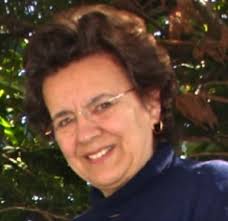
Prof. Dr. Maria Filomena Camões
Water, H2O, the most abundant substance on Earth’s surface and the only one to be naturally present in all three physical states, solid, liquid and gas, moves continuously through its hydrological cycle, dissolving, to smaller or bigger extent, most substances it contacts with. Water is decisive in terms of climate regulator, it is vital to known forms of life and plays an important role in the world economy. Water takes part in chemical reactions as a solvent and as a reactant.
What is often called “water” is in fact some aqueous mixture, solution or suspension. This makes it difficult to find water with a degree of purity adequate to most uses. There is increasing competition for water from industry and urbanization, its quality being regulated by national and international legislation. The variety and concentration of chemical species in the aquatic systems can be quite diversified, presenting a challenge in terms of both purification and quality control.
This section aims at promoting dissemination and discussion of relevant issues of the scope of Analytical Chemistry, ranging from development and applications of methods, instruments, and strategies to obtain information on the composition and nature of water in space and time and its fitness-for-the-purpose.
Keywords: water types and uses; aqueous solutions; analytical strategies; quality parameters; method validation; measurement results, uncertainty and traceability.
C. Rainwater Harvesting in Buildings
Section Chair
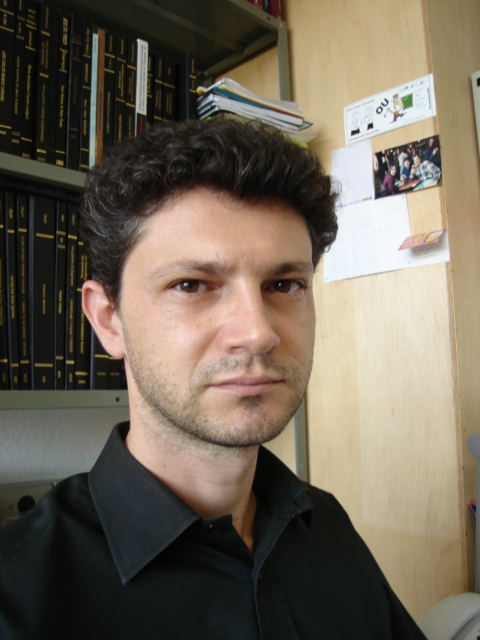
Prof. Dr. Enedir Ghisi (Laboratory of Energy Efficiency in Buildings, Department of Civil Engineering, Federal University of Santa Catarina, Campus Universitario, Trindade, Florianópolis - SC, 88040-900, Brazil)
As the population of many countries has increased rapidly, water availability and water supply have become a matter of increasing concern all over the world. According to United Nations, the world population is currently growing at 77 million people per year, which means that by keeping this growth rate there will be about 9 billion people in the world in 2050. This represents a 50% increase on the world population. Water resources are limited, therefore there will be water availability problems in many countries and it will be a challenge for governments to ensure an adequate potable water supply to all the population. In order to ease water availability problems and decrease potable water demand, rainwater harvesting has been suggested by many researchers. It has been reported that rainwater promotes potable water savings in many types of buildings all over the world. Therefore, this section welcomes papers on all subjects related to rainwater harvesting in buildings.
Keywords: Potable water; rainwater harvesting; economic and health issues; modeling and simulation
Session Chair
Professor Enedir Ghisi, Federal University of Santa Catarina
D. Pathogens in Water
Section Chair

Prof. Dr. Sunny Jiang (Department of Civil and Environmental Engineering, University of California, Irvine, California 92697-2175, USA)
Water is essential to support life system on earth but it is also the major cause of human morbidity and mortality in the world due to the presence of disease causing pathogens in water supply. The important link between human diseases and microbial contamination of water has been recognized since the first pandemic of chorea. However, the struggle for detecting, removing pathogens from water or preventing them from entering the water system is far from over. Pathogen monitoring technologies have improved from cultivation, isolation and identification based approaches to culture-independent molecular biological and near real time methods. Multi-barrier water treatment technologies have been implemented to recycle human sewage to drinking water. However, there are important gaps and significant challenges remain. This section will focus on advances in pathogen monitoring, treatment technologies, and innovative sanitary collection and treatment systems for separating pathogens from water resource. Another important area of water safety is at understanding the risk of human illness from exposure to pathogens and setting the right regulation and policy based on the pathogen or surrogate level.
Keywords: bacteria; viruses; protozoa; fecal indicator; sanitation; risk assessment; public health policy
Session Chair
Dr. Sunny Jiang
E. Emerging Contaminants in the Water Cycle
Section Chair
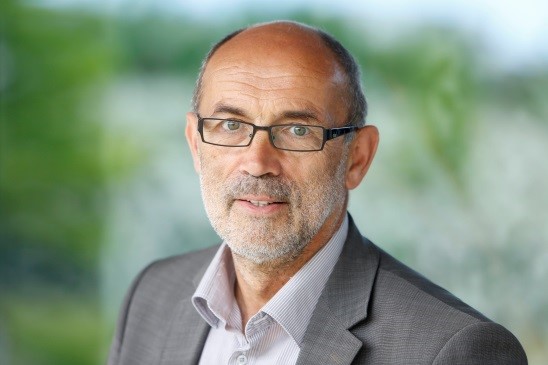
Prof. Dr. Wilhelm Püttmann
Committee member of the 2st International Electronic Conference on Water Sciences
Professor in Environmental Analytical Chemistry, Goethe University Frankfurt am Main, Institute of Atmospheric and Environmental Sciences, Department of Environmental Analytical Chemistry, Frankfurt am Main, Germany
After more than 30 years of continuous progressing research on the identification and evaluation of anthropogenic contaminant in the aquatic environment we should expect that most problems related to their possible influence on water quality should have been solved in the meantime. However, proceeding advances in analytical chemistry allow the detection of “new” chemicals that recently reach the water cycle but also of “old” chemicals that previously absconded from detection due to the absence of appropriate analytical tools. The recently intensified application of non-target analysis was helpful for the identification of abundant emerging pollutants. Currently, more than 700 emerging pollutants, metabolites and transformation products are listed as known constituents in the European aquatic environment (www.norman-network.net). Most of these compounds are currently not subject of water quality legislation partly due to a lack of knowledge regarding the contaminant sources and their pathways into the aquatic environment. The risk of drinking water contamination increases when the attenuation of emerging contaminants in the aquatic environment is low due to restricted biodegradation and, in addition, treatment technologies applied to produce drinking water from groundwater and river bank filtrate are ineffective. This combination of disadvantages has recently been identified in case of 1,4-dioxane which is sometime detectable in drinking water obtained from river bank filtrate at concentrations exceeding 1 µg/L.
Contributions dealing with the analysis of emerging contaminants, their behaviour and distribution in the aquatic environment and the risk assessment regarding ecotoxicological effects and drinking water quality are welcomed in this section.
Keywords: emerging contaminants; water cycle; organic pollutants; source identification; transformation products
Session Chair
Professor Wilhelm Püttmann
Show all published submissions (6) Hide published submissions (6)
Submissions
List of Papers (6) Toggle list
F. Climate Change and Marine Ecosystems
Section Chair
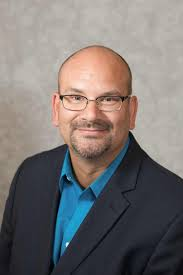
Climate change is an inescapable fact established by NOAA data demonstrating progressive increases in warming over the past 150 years. Significant increases in warming of our atmosphere coupled with our oceans having absorbed an extraordinary amount of heat (expressed as Joules of heat) suggest even if we could stop the warming trend today, the oceans would not begin to cool until 2075. As such, it is hypothesized that latitudinal borders will be pushed northward and southward toward the poles, creating excessively warm hyper-tropical zones. From pathogens to invasive species, novel, not-endemic species and pathogens will be observed more frequently compromising the health and survivorship of endemic organisms.
Keywords: Climate change; oceanography; pathogens; endemic species; hyper-tropical zones; invasive species
Show all published submissions (3) Hide published submissions (3)
Submissions
List of Papers (3) Toggle list
G. Wetland Research
Section Chair
Prof. Dr. Richard C. Smardon (Department of Environmental Studies, SUNY College of Environmental Science and Forestry, State University of New York, Syracuse, NYU 13210, USA)
Wetlands and their watersheds, as aquatic systems, provide valuable ecosystem services such as fish and wildlife habitat, nutrient cycling and carbon storage. From a more anthropocentric view these ecosystem services may include food, water supply, waste assimilation as well as aesthetic, recreation and educational opportunities. But these same aquatic systems are heavily stressed by human induced water pollution, land use encroachment and reduced watershed flows due to consumptive water usage in both developed and developing countries. So high quality interdisciplinary aquatic science is needed to address both 1) the nature of such ecosystem services and functions, 2) the stresses on these aquatic systems, and 3) appropriate management strategies to reduce or eliminate such stresses. Climate change is also an increasing dominating factor inducing gradual long-term shifts impacting the health of these aquatic systems – so again we need to understand such shifts and their effects.
Keywords: Wetlands; Watersheds; Water Pollution; Management Strategies; Climate Change
Session Chair
Dr. Richard Smardon, SUNY/ESF
Show all accepted abstracts (1) Hide accepted abstracts (1)
List of Accepted Abstracts (1) Toggle list






















